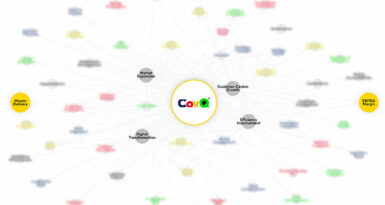
The CEO’s job in the budget process is an art, not a science. Yes, the actual budget itself is a mathematical spreadsheet that needs to balance across every row and column. But a strong CEO knows how to use a budget like a work of art to drive priorities, create compelling messaging to all of the various parties, and powerfully motivate the teams. In my years as CEO, here’s what I’ve found to be the most important components in creating a powerful budget.
Let’s start with priorities and goal setting. Too many companies are distracted by shiny objects, off-model projects, and hiring diversions. There is no better way to directly manage what gets accomplished than through the budget. An effective CEO will make sure that what needs to get done is adequately funded and vice versa. This is super simple and super important: don’t fund things that aren’t priorities. If the budget doesn’t enable it, the shiny objects don’t get chased because there aren’t resources to work on it. Sounds simple but I assure you that there are lots of people in your company today that want to build those shiny objects. The budget is your most important tool to prioritize how many resources are dedicated to all projects. Said differently, the budget is a way to fund the things you do want to get done and starve the things you don’t want to do.
Next, timing is everything. A wise CEO once taught me this provocative budgeting playbook for motivating your company: set up your annual revenue budget so you’ll get this outcome:
• CRUSH the Q1 revenue plan
• BEAT the Q2 revenue plan
• HIT the Q3 revenue plan
• MISS the Q4 revenue plan
Crazy, right? But here’s why it’s genius. The team starts off the year on a high note beating their numbers and feeling great about the first half of the year. The second half is daunting but a fired up team can accomplish so much more than a demoralized org. As the back half of the year approaches, a strong CEO will already be tightly managing the expense side of the house to ensure the bottom line is met (remember the CEO controls the budget which includes hiring and spending). This keeps people pushing hard to succeed and driving for an aggressive Q4. Of course you already know the Q4 target is most likely unachievable but you keep pushing your team of successful achievers to hit it. If they do, awesome! More likely they’ll miss it because it was set too high. But here’s the beauty of the plan: the Q4 miss gets buried as the year comes to a close and the new year begins. Now the team sets its focus on driving toward the new Q1 (achievable) target; the team doesn’t feel slighted because commissions and incentives have been practically set; expenses didn’t come in too high as you’ve been moderating them through the back half of the year*; and the board is ok as they’ve had their expectations set properly over the course of the year. It works out to an annual program for high achievement.
*What this implies of course, is that you have an iron fist on the hiring and expense side of the house. If you hire too far in advance of a big revenue expectation, you’ll miss both the top and bottom line, and that spells death. Miss the top line (knowing full well in advance) but hitting the bottom line can be acceptable to a productive board with proper expectation setting (note this doesn’t work for public companies!)
Lastly, an important note on budget communication: almost every CEO I know struggles with multiple forms of the same budget. Often there will be a combination of a published (aggressive) budget, a board (moderate) budget, a sales (super aggressive) budget, and a CEO’s (worst case) budget. Keeping track of these and making sure the team doesn’t get confused or twisted by the various combinations is also an art form. I once had a Sales manager tell me that missing her sales target wouldn’t matter so long as she hit the (more achievable) board target. She neglected to remember, however, that her commission plan was tied to her aggressive target. Everyone needs to know their specific expectation and track to their plan, regardless of what other plans exist. In an ideal world, a single budget would drive everything but setting different sets of expectations for different parties often requires different forms of the budget and the CEO’s task is to make sure that each party is operating against the right targets.
The bottom line: budgets are one of the CEO’s most potent weapons to drive results and team achievement. Combined with a motivating incentive plan, a compelling budget guides, inspires, and propels success across all of the organization. Without it, there’s zero path to success and no way to push the team toward the finish line. It’s much more than a spreadsheet filled with numbers!




